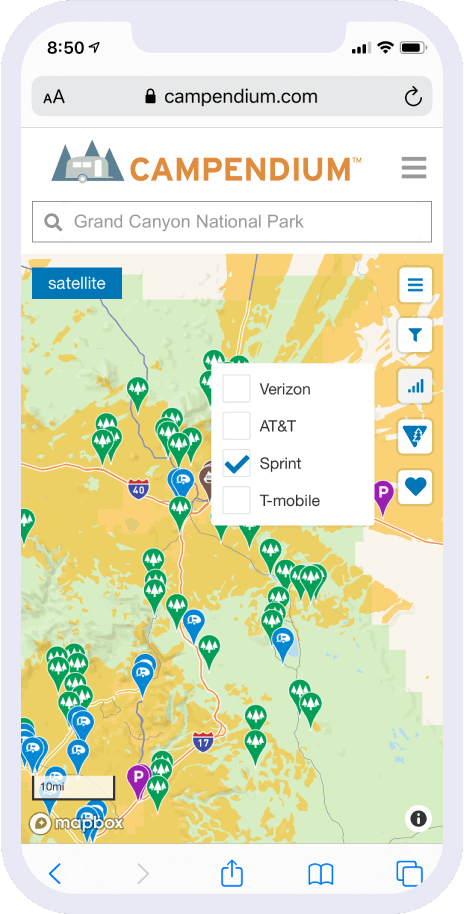Camping at Land Between the Lakes National Recreation Area - What You Need to Know
Ten times the size of Manhattan with over 1400 campsites and no full-time residents (other than park staff and many buried there) means Land Between the Lakes (LBL) has a lot of room to spread out. Dozens of coves and inlets were created when the Tennessee and Cumberland rivers were dammed in the 1940s and 1960s, respectively, resulting in the largest inland peninsula in the United States.
See Land Between the Lakes National Recreation Area camping map.
Spanning two states, Tennessee and Kentucky, The Woodlands Trace National Scenic Byway “The Trace” runs the 40-mile length of LBL from Dover, TN to Grand Rivers, KY. There are two welcome stations, one south, and one north, plus the Golden Pond Visitor Center and Planetarium in the center. All three have a dump station and freshwater fill.
What is there to do at LBL?
The question should be, what CAN’T you do at LBL? Every designated campground is on the water, all with access to the paddling trail surrounding the peninsula. Over two dozen boat ramps and two large lakes (Kentucky Lake and Lake Barkley) make this a paradise for recreational boating and fishing.
There are elk and bison herds, including the Bison Prairie, the Woodlands Nature Station, historical iron furnaces, Civil War battle sites and fort, a working farm, a planetarium and observatory, picnic areas, over 200 family cemeteries, 100 miles of equestrian trails, 261 miles of hiking trails, 70 miles of bike trails including single-track mountain bike trails, plus endless bird and wildlife spotting. Rounding it out is the Turkey Bay Off-Highway Vehicle Area.
Can you camp anywhere in LBL?
Yes, you may camp almost anywhere in LBL. A Basic Camping Permit is required for each person 18 and over when camping in Basic Camping Facilities. A Dispersed Camping Permit is required when camping in non-designated areas. Both permits currently cost $50 for an annual permit and $10 for a three-day permit and can be purchased online or at any LBL facility. Please note that these permits do not apply when camping at Self-Service Campgrounds.
What are the different Types of Camping in LBL?
Camping in LBL ranges from full-service seasonal to primitive backcountry. All camping options require a permit, pass, or nightly fee. All camping is first-come, first-served except the 4 developed campgrounds. Due to the range of camping options, with each having its own fee structure, be sure to check online or with park staff before choosing your campsite.
Developed Camping
The majority of designated campsites at LBL are located in the 4 full-service campgrounds. From south to north, they are Piney, Wranglers, Energy Lake & Hillman Ferry. Reservations can be made on the LBL website.
Self-Service Campgrounds
At Self-Service Campgrounds, you choose a site, fill out a provided fee envelope, insert your camping fee (starting at $10 or $5 per night with a valid national park pass) into the envelope, and deposit it in the “Iron Ranger” fee tube. Registration is required within 30 minutes of setting up your camp. Self-Service Campgrounds offer basic amenities, including designated campsite pads, picnic tables, grills, fire rings, vault toilets, trash pickup, lake access, and boat ramps.
Self-Service Campgrounds include:
- Cravens Bay (seasonal camping available)
- Fenton (30 amp hookups available)
- Nickell Branch
- Birmingham Ferry
- Smith Bay
- Sugar Bay
- Taylor Bay (seasonal camping available)
- Redd Hollow
- Boswell Landing
- Gatlin Point
Basic Campgrounds
Twin Lakes is the only basic campground. Located near the North Welcome Station, it has easy access and appeals to those who prefer designated campsites and a few amenities. Basic campgrounds require a basic camping permit - $10 per person for 3 days over 18, or $50 annually.
Basic Camping Areas
Located at the end of a road near the water, basic camping areas are open areas without defined campsites. Amenities vary by area but might include a vault toilet, boat ramp, picnic tables, and fire rings. Check the listings on the General Information and Map brochure available at the welcome stations or online. A basic camping permit allows you to camp anywhere in a camping area. Basic camping areas worth checking out are:
Dispersed Camping
Dispersed camping is anywhere along forest roads or the lakeshore throughout the recreation area that are not designated as camping areas. Be sure to review the Camping Rules to comply with LBL regulations regarding where camping is allowed. A Dispersed Camping Permit is required and costs the same as a Basic Camping Permit.





















































 Curated by the Campendium Community
Curated by the Campendium Community